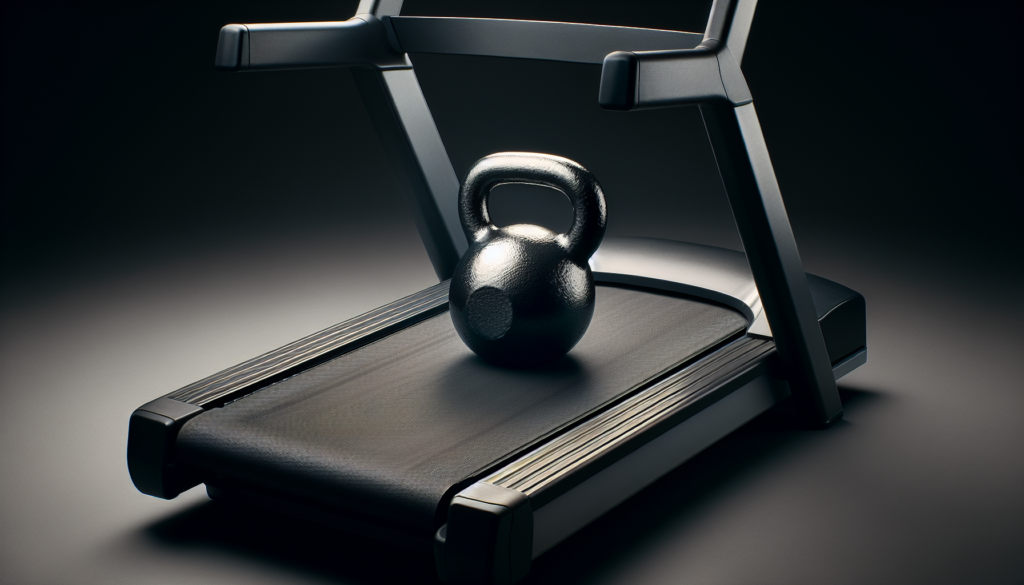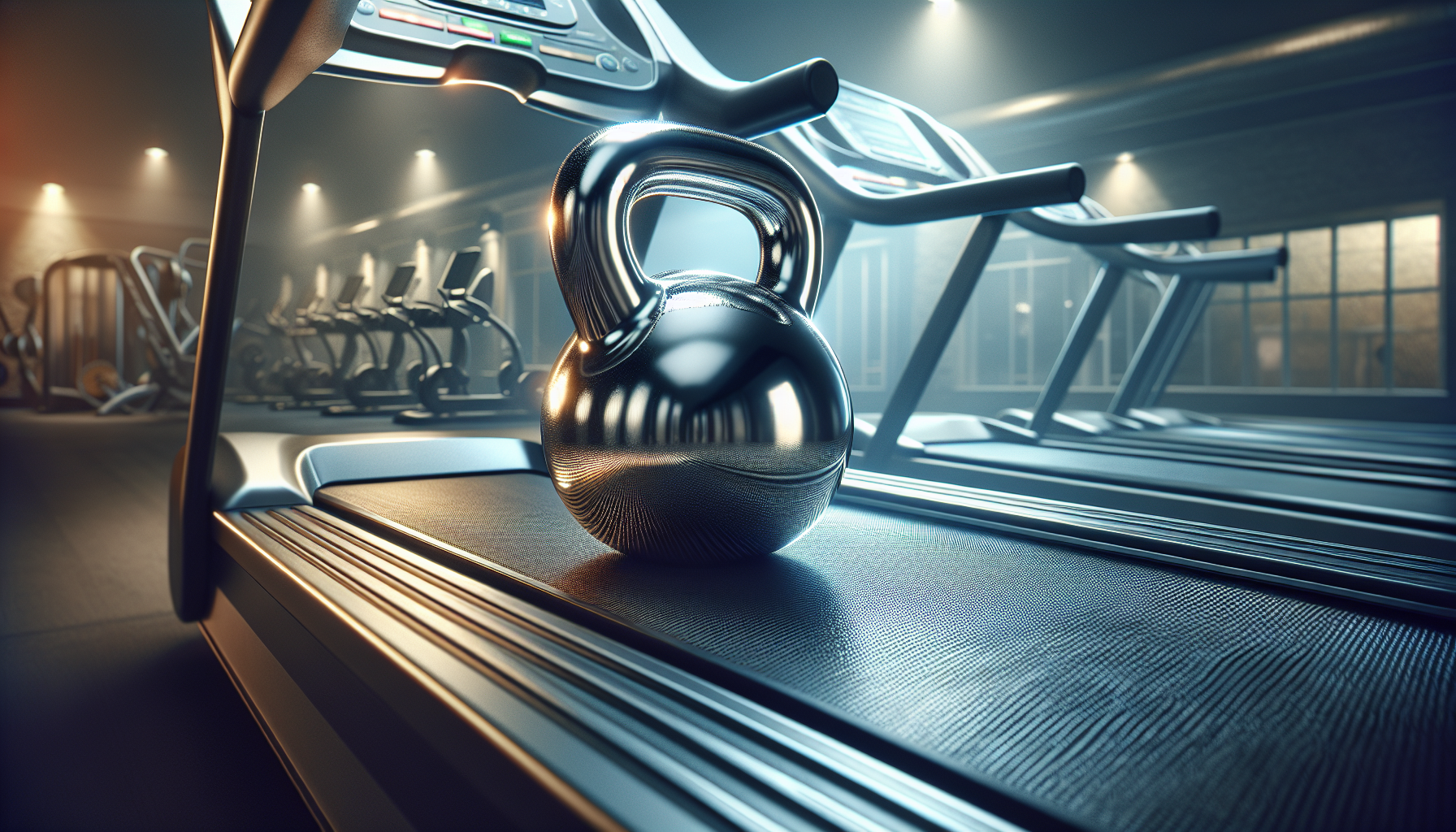Have you ever wondered if walking on a treadmill can actually help tighten your stomach? Well, it turns out that this popular form of exercise may be more beneficial for your abdominal muscles than you may think. Walking on a treadmill engages your core muscles, including your abs, as you strive to maintain balance and proper form. Not only does it provide a simple and convenient way to burn calories, but it also assists in strengthening and toning your stomach over time. So, if you’re looking for an effective way to tighten your stomach, lacing up your sneakers and taking a stroll on the treadmill might just be the key to achieving your fitness goals.

The benefits of walking on a treadmill
Walking on a treadmill offers numerous benefits for your overall health and well-being. Let’s explore some of the key advantages of incorporating this exercise into your routine.
Improvement in cardiovascular health
Walking on a treadmill is an excellent way to improve your cardiovascular health. Regular exercise, such as brisk walking, helps to strengthen your heart, increase lung capacity, and enhance circulation. By elevating your heart rate during a treadmill workout, you are essentially giving your cardiovascular system a workout, which can lead to a healthier heart and reduced risk of cardiovascular diseases.
Weight loss and calorie burn
If weight loss is one of your goals, walking on a treadmill can be an effective way to shed those extra pounds. By walking at a brisk pace and maintaining a consistent exercise routine, you can burn a significant number of calories. Consistency is key here – the more often and the longer you walk on a treadmill, the more calories you are likely to burn. Combined with a balanced diet, walking on a treadmill can contribute to your weight loss journey.
Strengthening of leg muscles
Walking on a treadmill is a weight-bearing exercise, which means it puts stress on your bones and muscles, aiding in the strengthening of your leg muscles. The repetitive motion of walking engages your quadriceps, hamstrings, calves, and glutes, helping to develop lean muscle mass. With consistent treadmill walking, you may notice increased strength and toning in your leg muscles over time.
Reduced stress and improved mood
Exercise, including walking on a treadmill, has been shown to have a positive impact on mental health and well-being. Regular physical activity releases endorphins, known as “feel-good” hormones, which can alleviate stress, reduce anxiety and depression, and improve your overall mood. The rhythmic motion of walking on a treadmill can be calming and meditative, providing a great opportunity to clear your mind and unwind.
Understanding the abdominal muscles
In order to understand how walking on a treadmill can contribute to stomach tightening, it’s important to have a basic understanding of the abdominal muscles and their role in maintaining a strong core.
Overview of the core muscles
The core muscles are a group of muscles that make up the central part of your body. They include not only the abdominal muscles but also the muscles of the lower back, pelvis, and hips. The core muscles act as stabilizers, providing support and balance for the spine and pelvis during movement.
Role of the abdominal muscles
Among the core muscles, the abdominal muscles play a crucial role in maintaining good posture, protecting the internal organs, and assisting in various movements. They are responsible for flexing the spine, stabilizing the torso, and assisting in activities such as bending, twisting, and lifting.
Types of abdominal muscles
The abdominal muscles are divided into several main groups, including the rectus abdominis, transverse abdominis, external obliques, and internal obliques.
The rectus abdominis, commonly known as the “six-pack” muscles, run vertically along the front of your abdomen and are responsible for flexing the spine.
The transverse abdominis is the deepest layer of abdominal muscles and acts as a natural corset, providing stability and support to the core.
The external and internal obliques are positioned on each side of the rectus abdominis and are responsible for rotation and side-to-side movements of the torso.
Importance of a strong core for a defined stomach
A strong core is not only essential for a defined stomach but also for overall stability and functional movement. Having a well-developed core can help improve posture, prevent lower back pain, enhance athletic performance, and reduce the risk of injuries. Strengthening the abdominal muscles through exercises such as walking on a treadmill can contribute to achieving a more toned and defined stomach.
Walking on a treadmill and abdominal muscles
Now that we understand the abdominal muscles and their role in a strong core, let’s explore how walking on a treadmill can specifically impact these muscles.
The impact on the core muscles
Walking on a treadmill engages the core muscles to stabilize and support the body during the walking motion. As you walk, your core muscles work to maintain proper alignment and prevent excessive swaying or leaning. This continuous engagement of the core muscles can help strengthen and tone your abdominal muscles over time.
Engagement of the abdominal muscles
To further engage your abdominal muscles while walking on a treadmill, focus on maintaining good posture throughout your workout. Stand tall, keeping your shoulders back, and engage your core by pulling your belly button towards your spine. This conscious effort to activate your abdominal muscles while walking can intensify the workout and increase the stimulation and tightening of these muscles.
Calories burned and fat loss
Walking on a treadmill, especially when done at a brisk pace, can help you burn calories and promote fat loss. By creating a calorie deficit through regular treadmill walking and a balanced diet, you can reduce overall body fat, including excess fat around the stomach area. As you gradually lose weight and body fat, you may notice a tighter and more defined stomach.
Influence on posture and alignment
Proper posture and alignment are crucial for a toned stomach and overall core strength. Walking on a treadmill can help improve your posture by strengthening the muscles that support the spine, including the abdominal muscles. As you develop better posture and alignment through regular treadmill walking, your stomach may appear flatter and more sculpted due to the improved positioning of the abdominal muscles.

Factors affecting stomach tightening
While walking on a treadmill can be beneficial for toning your stomach, there are several factors to consider that can affect the level of stomach tightening you achieve.
Exercise intensity and duration
The intensity and duration of your treadmill walking sessions can significantly impact stomach tightening. To see noticeable results, it is important to challenge yourself with longer and more intense workouts. Gradually increase the speed, incline, or duration of your treadmill walks to provide your abdominal muscles with a greater stimulus and encourage further tightening.
Incorporating incline and speed variations
Varying the incline and speed during your treadmill walks can provide additional challenges to your abdominal muscles. Walking uphill or at an increased speed requires more effort from your core to maintain stability and balance. These variations can enhance the engagement of your abdominal muscles and contribute to a more effective stomach tightening workout.
Incorporating interval training
Interval training involves alternating between periods of high-intensity exercise and lower-intensity recovery periods. By incorporating intervals into your treadmill walking routine, you can increase the intensity of your workout and stimulate the abdominal muscles to a greater extent. The quick bursts of high-intensity effort followed by recovery periods help to burn calories, increase metabolism, and promote fat loss – all of which contribute to stomach tightening.
Balanced diet and nutrition
While walking on a treadmill can aid in stomach tightening, it is important to remember that exercise alone is not enough to achieve a defined stomach. A balanced diet that includes the right mix of nutrients is essential for overall weight loss and fat reduction. By fueling your body with nutritious foods and maintaining a calorie deficit, you can support the efforts of treadmill walking and maximize your stomach tightening results.
Supplementary exercises for stomach tightening
In addition to treadmill walking, incorporating targeted exercises can further enhance stomach tightening and core strength. Here are a few exercises that can complement your treadmill workouts:
Crunches and sit-ups
Crunches and sit-ups are classic abdominal exercises that specifically target the rectus abdominis. These exercises involve flexing the spine and contracting the abdominal muscles to strengthen and tone the abdominal area.
Planks and side planks
Planks and side planks are excellent exercises for strengthening the entire core, including the abdominal muscles. They require maintaining a static position while engaging the core muscles, providing a deep contraction that can contribute to a stronger and more stable core.
Russian twists and leg raises
Russian twists and leg raises are dynamic exercises that challenge the abdominal muscles, particularly the obliques. These exercises involve rotational movements or lifting the legs, activating the abdominal muscles and promoting increased muscle tone and definition.
Pilates and yoga
Pilates and yoga are full-body exercises that focus on core strength, stability, and flexibility. Many Pilates and yoga poses involve engaging and strengthening the abdominal muscles, making them great options for complementing treadmill walking and promoting overall core strength and toning.
Precautions and considerations
While walking on a treadmill and engaging in stomach tightening exercises can have numerous benefits, it’s important to keep some precautions and considerations in mind.
Consulting a healthcare professional
Before starting any new exercise regimen, especially if you have pre-existing medical conditions or injuries, it is advisable to consult a healthcare professional. They can provide personalized guidance and ensure that walking on a treadmill and abdominal exercises are safe and appropriate for you.
Proper warm-up and cool-down routines
Warming up before a treadmill workout and cooling down afterward are essential to prevent injuries and enhance recovery. Prior to your treadmill walk, perform dynamic stretches and light cardio exercises to gradually increase your heart rate and warm up your muscles. Afterward, include static stretches to help cool down and loosen the muscles.
Maintaining proper form
To maximize the benefits of treadmill walking and abdominal exercises while minimizing the risk of injuries, it is crucial to maintain proper form throughout your workouts. Pay attention to your body alignment, avoid excessive strain on your back or neck, and engage the core muscles effectively to protect your spine and promote effective muscle engagement.
Listening to your body
Everyone’s fitness level and abilities are different, so it is important to listen to your body and adjust your treadmill workouts accordingly. If you experience any pain, discomfort, or dizziness during or after exercise, take a break and consult a healthcare professional if necessary. Remember that consistency and gradual progression are key to achieving optimal results while preventing injuries.
Tips for effective treadmill workouts
To make the most of your treadmill walking and enhance its impact on stomach tightening, consider implementing the following tips:
Gradually increasing intensity
Start with a comfortable pace and gradually increase the intensity of your treadmill walks over time. This can be done by increasing the speed, incline, or duration of your workouts. By gradually challenging your body, you can continue to stimulate and strengthen your abdominal muscles while avoiding plateaus.
Mixing up workout routines
To keep your treadmill workouts fresh and enjoyable, consider incorporating different workout routines. This can include interval training, varying the incline and speed, or even trying different walking styles such as power walking or walking lunges. Mixing up your routines can prevent boredom, challenge different muscle groups, and provide a more well-rounded workout experience.
Setting realistic goals
Setting realistic goals can help you stay motivated and focused on your stomach tightening journey. Be specific in what you want to achieve and set both short-term and long-term goals. Track your progress and celebrate milestones along the way to maintain motivation and strive for continued improvement.
Tracking progress and making adjustments
Keep a record of your treadmill workouts and track your progress over time. This can be done through a fitness app, a journal, or even a simple spreadsheet. Regularly assess your progress and make adjustments to your workouts as needed. This can include increasing the intensity, incorporating new exercises, or modifying your routine based on your goals and preferences.
Combining treadmill walking with other exercises
While treadmill walking can be effective for stomach tightening, combining it with other exercises can further enhance your results. Here are a few types of exercises that can complement your treadmill routine:
Strength training exercises
Incorporating strength training exercises, such as weightlifting or resistance training, can help build muscle mass and increase overall calorie burn. By adding a few strength training sessions to your weekly routine, you can promote further fat loss and contribute to a toned and defined stomach.
High-intensity interval training (HIIT)
HIIT workouts involve short bursts of intense exercise alternated with brief recovery periods. These workouts are known for their calorie-burning potential and can provide a significant boost to your metabolism. Including HIIT sessions alongside your treadmill walks can accelerate stomach tightening and overall fitness gains.
Aerobic exercises
While walking on a treadmill is an excellent aerobic exercise itself, incorporating other aerobic exercises can add variety and further enhance your cardiovascular health. Consider activities such as cycling, swimming, or group fitness classes to diversify your workouts and continuously challenge your body.
Flexibility and stretching exercises
Maintaining flexibility and mobility is important for overall fitness and injury prevention. Including regular flexibility and stretching exercises, such as yoga or Pilates, can improve your range of motion, reduce muscle tension, and complement the core-strengthening benefits of treadmill walking.
Other lifestyle factors for a defined stomach
In addition to treadmill walking and targeted exercises, several lifestyle factors can contribute to achieving a defined stomach. Consider the following factors as part of your overall approach:
Adequate sleep and stress management
Getting enough sleep and effectively managing stress are crucial for overall health and well-being, including stomach tightening. Lack of sleep and chronic stress can negatively impact hormonal balance, metabolism, and digestion, which may hinder your progress towards a defined stomach. Prioritize quality sleep and adopt stress management techniques, such as meditation or deep breathing exercises, to support your body’s natural processes.
Proper hydration
Staying properly hydrated is essential for optimal bodily functions and can aid in weight loss and digestion. Adequate hydration supports metabolism, helps flush out toxins, and can contribute to a more regular bowel movement, all of which are important for stomach tightening. Aim to drink enough water throughout the day and listen to your body’s thirst signals.
Avoiding excessive alcohol consumption
Alcohol contains empty calories and can interfere with your body’s ability to burn fat efficiently. Excessive alcohol consumption can also contribute to dehydration, impair muscle recovery, and disrupt sleep patterns. Limiting alcohol intake or choosing healthier alternatives can support your stomach tightening efforts and overall health.
Avoiding processed foods and sugar
Processed foods and added sugars can contribute to weight gain and inflammation, making it harder to achieve a defined stomach. Opt for whole, nutrient-dense foods, such as fruits, vegetables, lean protein, and whole grains. These foods provide essential nutrients and fiber while minimizing unnecessary calories and artificial additives.
Conclusion
Walking on a treadmill offers a variety of benefits, including improvements in cardiovascular health, weight loss potential, strengthening of leg muscles, and reduced stress levels. When coupled with a focus on abdominal muscles, treadmill walking can contribute to stomach tightening and the development of a defined stomach.
Understanding the importance of a strong core, engaging the abdominal muscles during treadmill walks, and considering various factors such as exercise intensity and duration, incline and speed variations, interval training, and nutrition, can help enhance the effectiveness of stomach tightening efforts.
Supplementary exercises, proper precautions, and considerations, as well as incorporating a well-rounded approach with other exercises and lifestyle factors, can further support a defined stomach. By setting realistic goals, tracking progress, and making adjustments along the way, you can maximize the benefits of treadmill walking and achieve your desired results. Remember to always listen to your body, consult a healthcare professional if needed, and enjoy the journey towards a stronger and tighter stomach.


